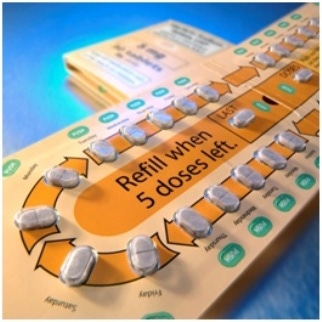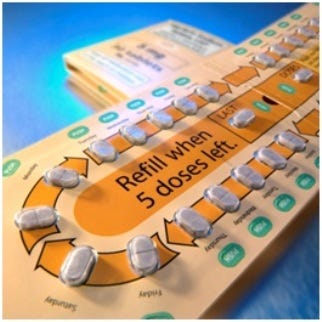March 11, 2015


Pharmaceutical packaging
The Healthcare Compliance Packaging Council (HCPC), a non-profit trade association devoted to improving patient adherence through intelligent packaging, recently released a white paper that compiles the results of eight separate studies conducted over the past two decades that support the use of compliance-prompting, calendarized packaging as a successful tool for improving patient adherence. While there are many package forms that can incorporate compliance prompting features, these features are most often found in a blister format that provides a schedule with the days of the week and times (AM/PM), clearly reminding the patient when to take the medication. Many pharmaceutical manufacturers include detailed patient information and branding on a compliance-prompting package in an easy to read format, as it can be designed with adequate space.
According to Walt Berghahn, HCPC Executive Director, "we're thrilled that the nation's health care system is becoming more aware of the impact poor patient medication adherence has on the overall health of the populace. Compliance-prompting packaging is a simple tool that can help reduce healthcare costs. What is puzzling is that calendarized, compliance-prompting, prescription packaging is often ignored as a tool to help the patient take the right dose at the right time. Yet, pharmaceutical packaging is the closest communication vehicle to the patient when he/she is preparing to take medication. Study after study over the past twenty years support the use of modernized patient prompting packaging to improve patient adherence. We have reported the results of these various studies since the inception of this organization in 1989. Now, we've collected these results in one comprehensive document that supports greater use of compliance-prompting packaging to improve patient adherence and improve health outcomes. At a time when healthcare costs are out of control here is a simple solution which can have significant impact on cost reduction."
Eight individual studies are reviewed in the HCPC white paper, beginning with the 1984 Modulus Hormone Replacement Study to the often cited Ohio State University study. The paper also reviews recently released significant, peer-reviewed research results from a major mass merchandise pharmacy retailer. It is the goal of the HCPC and its member companies, to have compliance-prompting packaging duly recognized as a key tool to improving patient adherence and outcomes. All of the studies highlight increased adherence through compliance-prompting packaging and some reflect adherence rates of 82+% or better. The Ohio State study goes so far as to highlight the improved outcomes of patient adherence through compliance-prompting packaging by providing the significant improvements in the blood pressures exhibited by the adherent elderly patients.
The HCPC notes there are many variations in successful compliance-prompting packaging designed to improve patient adherence. The organization recognizes many of these from such major pharmaceutical manufacturers as GlaxoSmithKline, BMS, Novartis, and Pfizer, in their annual Compliance Package of the Year competition. Both the HCPC white paper and information on industry-winning compliance prompting packaging are available from the organization's website.
You May Also Like


